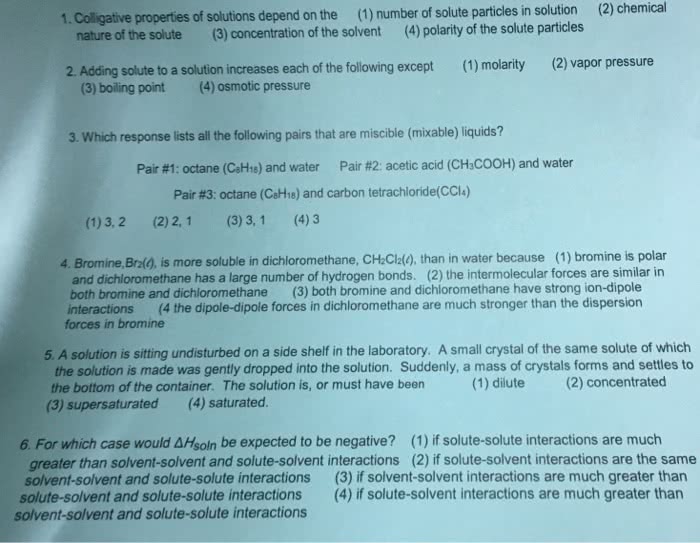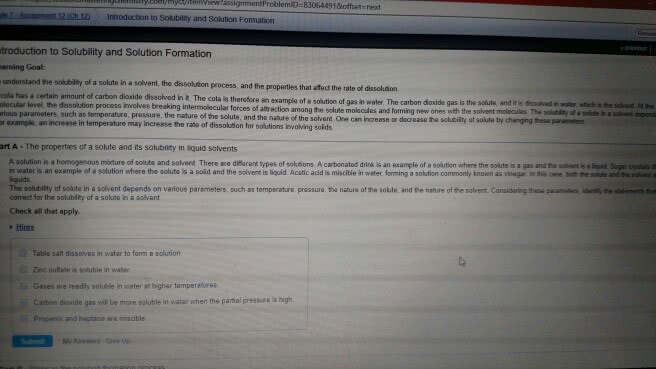CHEM 1312 Chapter Notes - Chapter 13.1-13.3: Isopropyl Alcohol, Intermolecular Force, Mole Fraction
Document Summary
Solution consists of a solvent and one or more solutes. Saturated solution- maximum amount of a solute that will dissolve in a certain temperature. Solubility- the amount of solute dissolved in a given volume of a saturated solution. Unsaturated solution- a solution that contains less solute than it has the capacity to dissolve. Supersaturated solution- contains more dissolved solute than is present in saturated solution (crystallization) 13. 2- a molecular view of the solution process: Solvation: when molecules of the solute disperse and are separated from one another and then are surrounded by solvent molecules. The ease of solvation is determined by the strengths of: Such interactions exist in a mixture of different substances. Solutions can have the following additional intermolecular forces: Ion-dipole: the charge of the ion is attracted to the partial charge on a polar molecule. Dipole-induced dipole: the partial charge on a polar molecule induces a temporary partial charge on a neighboring nonpolar molecule or atom.



